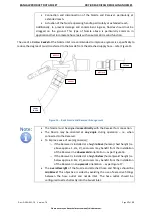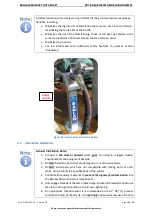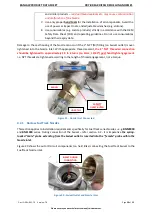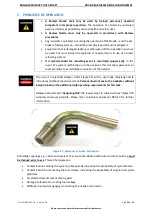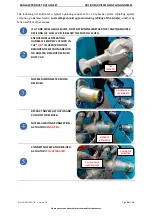
BANLAW PRODUCT DATA SHEET
DRY-BREAK DIESEL REFUELLING NOZZLES
Doc ID: PRH-REF-70 Version: 7.0
Page
10
of
32
Please ensure you have the latest version of this document.
Table 3 details the relationship between the various Nozzle settings, specifically with respect to the
“Medium” (M) setting.
I.e. the “offset” refers to the change in nozzle shut
-off pressure from a Medium
setting. This data only applies when the Banlaw Nozzle is used with a Banlaw Receiver and the Receiver
spring setting remains unchanged. The data may be subject to change when a nozzle is used with a non-
Banlaw (third party) receiver.
Nozzle Spring Setting
Code/Marking
Nozzle Shut-Off Pressure Offset (± 5 kPa)
Light
L
-40 kPa (5.8psi)
Medium-Light
ML
-20kPa (2.9psi)
Medium (Standard)
M
0 kPa
Medium-Heavy
MH
+10 kPa (1.5psi)
Heavy
H
+25 kPa (3.6psi)
Table 3 - Nozzle (Piston Spring) Shut-Off Settings
Examples;
•
Adjusting the Nozzle spring setting from a Medium (M) to a Light (L) setting will
decrease
the
shut-off pressure by 40 ± 5 kPa.
•
Adjusting the Nozzle spring setting from a Medium (M) to a Heavy (H) setting will
increase
the
shut-off pressure by 25 ± 5 kPa.
Please refer to the Product Data Sheet (PRH-REF-72) for information on Receiver spring settings.
1.7
FuelTrack Nozzle Variants
Figure 12 illustrates the basic architecture of the Banlaw FuelTrack dry-break auto ID system, specifically
the Nozzle and Receiver in the 2 operating states;
•
Nozzle disconnected from Receiver;
o
4.6 to 5Vdc at the centre contact of the
Nozzle
.
o
Receiver is passive.
o
No auto ID circuit.
•
Nozzle connected to Receiver;
o
Auto ID circuit energised between Nozzle and Receiver.
o
Circuit “reads” unique ID tag (code) of Receiver.
The Signal from the auto ID circuit is
transmitted through the active data cable and is Received and processed by the Local
Controller (i.e. “
Depot
”)
.
Most refuelling applications utilising a Banlaw or similar Nozzle are accommodated
using a
“Medium” (M)
spring setting, however growing use of larger plant equipment
and higher refuelling flowrates is creating a requirement for
heavier
(higher) Nozzle
spring settings. In addition, the use of non-metal (i.e. plastic, resin) fuel tanks are often
best refilled using a lighter Nozzle spring setting. Please refer document EBL-33.
To provide the highest practicable level of protection, Banlaw recommends a suitable
zero pressure overfill protection (OFP) system
–
e.g. Banlaw FillSafe™
is considered
for all tanks.

















